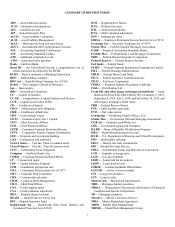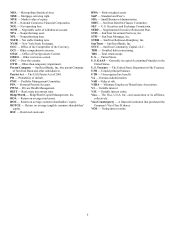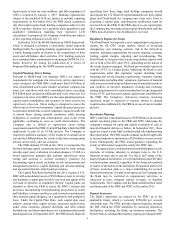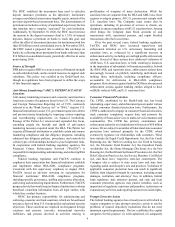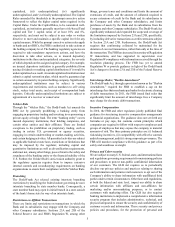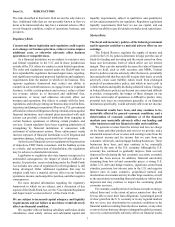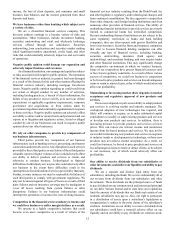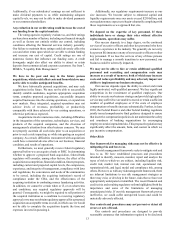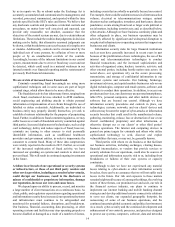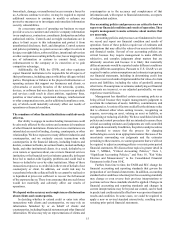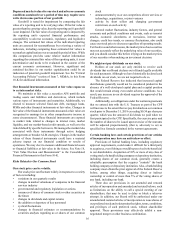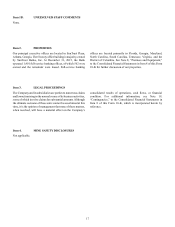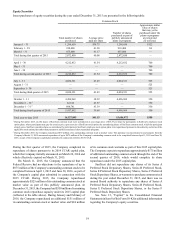SunTrust 2015 Annual Report Download - page 37
Download and view the complete annual report
Please find page 37 of the 2015 SunTrust annual report below. You can navigate through the pages in the report by either clicking on the pages listed below, or by using the keyword search tool below to find specific information within the annual report.9
Management” and "Net Interest Income/Margin" sections of the
MD&A in this Form 10-K.
Our earnings may be affected by volatility in mortgage
production and servicing revenues, and by changes in
carrying values of our MSRs and mortgages held for sale due
to changes in interest rates.
We earn revenue from originating mortgage loans and fees
for servicing mortgage loans. When rates rise, the demand for
mortgage loans usually tends to fall, reducing the revenue we
receive from loan originations (mortgage production revenue).
Changes in interest rates can affect prepayment assumptions
and thus the fair value of our MSRs. An MSR is the right to
service a mortgage loan-collect principal, interest and escrow
amounts-for a fee. When interest rates fall, borrowers are usually
more likely to prepay their mortgage loans by refinancing them
at a lower rate. As the likelihood of prepayment increases, the
fair value of our MSRs can decrease. Each day we evaluate the
fair value of our MSRs and any related hedges, and any net
decrease in the fair value reduces the fair value of the MSR asset
and related hedge instruments, which in turn reduce earnings in
the period in which the decrease occurs.
Similarly, we measure at fair value mortgages held for sale
for which an active secondary market and readily available
market prices exist. Similar to other interest-bearing securities,
the value of these mortgages held for sale may be adversely
affected by changes in interest rates. For example, if market
interest rates increase relative to the yield on these mortgages
held for sale and other interests, their fair value may fall. We may
not hedge this risk, and even if we do hedge the risk with
derivatives and other instruments, we may still incur significant
losses from changes in the value of these mortgages held for sale
and other interests or from changes in the value of the hedging
instruments. For additional information, see “Enterprise Risk
Management-Other Market Risk” and “Critical Accounting
Policies” in the MD&A, and Note 9, “Goodwill and Other
Intangible Assets,” to the Consolidated Financial Statements in
this Form 10-K.
We use derivatives to hedge the risk of changes in the fair
value of the MSR, exclusive of decay. The hedge may not be
effective and may cause volatility, or losses, in our mortgage
servicing income. Also, we typically use derivatives and other
instruments to hedge our mortgage banking interest rate risk. We
generally do not hedge all of our risk, and we may not be
successful in hedging any of the risk. Hedging is a complex
process, requiring sophisticated models and constant monitoring
and re-balancing. We may use hedging instruments tied to U.S.
Treasury rates, LIBOR or Eurodollars that may not perfectly
correlate with the value or income being hedged. We could incur
significant losses from our hedging activities. There may be
periods where we elect not to use derivatives and other
instruments to hedge mortgage banking interest rate risk. For
additional information, see Note 17, “Derivative Financial
Instruments,” to the Consolidated Financial Statements in this
Form 10-K.
Disruptions in our ability to access global capital markets
may adversely affect our capital resources and liquidity.
In managing our consolidated balance sheet, we depend on
access to global capital markets to provide us with sufficient
capital resources and liquidity to meet our commitments and
business needs, and to accommodate the transaction and cash
management needs of our clients. Other sources of contingent
funding available to us include inter-bank borrowings,
repurchase agreements, FHLB capacity, and borrowings from
the Federal Reserve discount window. Any occurrence that may
limit our access to the capital markets, such as a decline in the
confidence of debt investors, our depositors or counterparties
participating in the capital markets, or a downgrade of our debt
rating, may adversely affect our funding costs and our ability to
raise funding and, in turn, our liquidity.
Credit Risks
We are subject to credit risk.
When we lend money, commit to lend money or enter into
a letter of credit or other contract with a counterparty, we incur
credit risk, which is the risk of losses if our borrowers do not
repay their loans or if our counterparties fail to perform according
to the terms of their contracts. A number of our products expose
us to credit risk, including loans, leveraged loans, leases and
lending commitments, derivatives, trading assets, insurance
arrangements with respect to such products, and assets held for
sale. The credit quality of our portfolio can have a significant
impact on our earnings. We estimate and establish reserves for
credit risks and credit losses inherent in our credit exposure
(including unfunded credit commitments). This process, which
is critical to our financial results and condition, requires difficult,
subjective, and complex judgments, including about how
economic conditions might impair the ability of our borrowers
to repay their loans. As is the case with any such assessments,
there is always the chance that we will fail to identify the proper
factors or that we will fail to accurately estimate the impacts of
factors that we do identify.
We might underestimate the credit losses inherent in our
loan portfolio and have credit losses in excess of the amount
reserved. We might increase the allowance because of changing
economic conditions, including falling real estate or commodity
prices and higher unemployment, or other factors such as
changes in borrower behavior. As an example, borrowers may
discontinue making payments on their real estate-secured loans
if the value of the real estate is less than what they owe, even if
they are still financially able to make the payments.
Also, to the extent we increase our consumer credit portfolio,
we may be subject to greater risk than we have experienced in
the past since such loans typically are unsecured and may be
subject to greater fraud risk to the extent such loans are originated
online.
While we believe that our allowance for credit losses was
adequate at December 31, 2015, there is no assurance that it will
be sufficient to cover all incurred credit losses, especially if
economic conditions worsen. In the event of significant
deterioration in economic conditions, we may be required to
increase reserves in future periods, which would reduce our
earnings and potentially capital. For additional information, see
the “Risk Management-Credit Risk Management” and “Critical
Accounting Policies-Allowance for Credit Losses” sections of
the MD&A in this Form 10-K.


